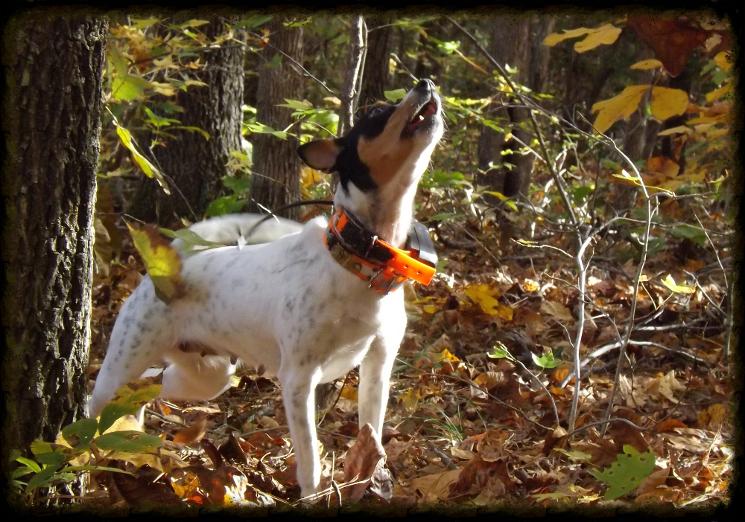
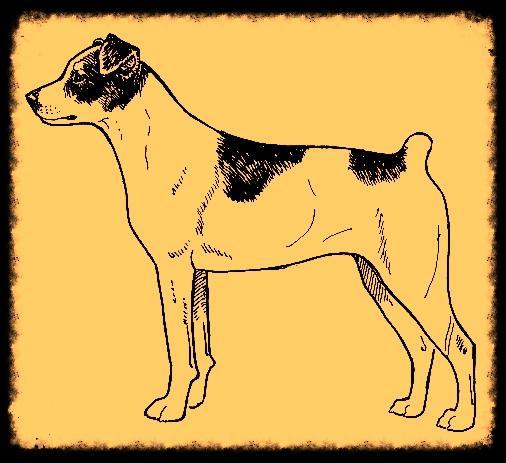
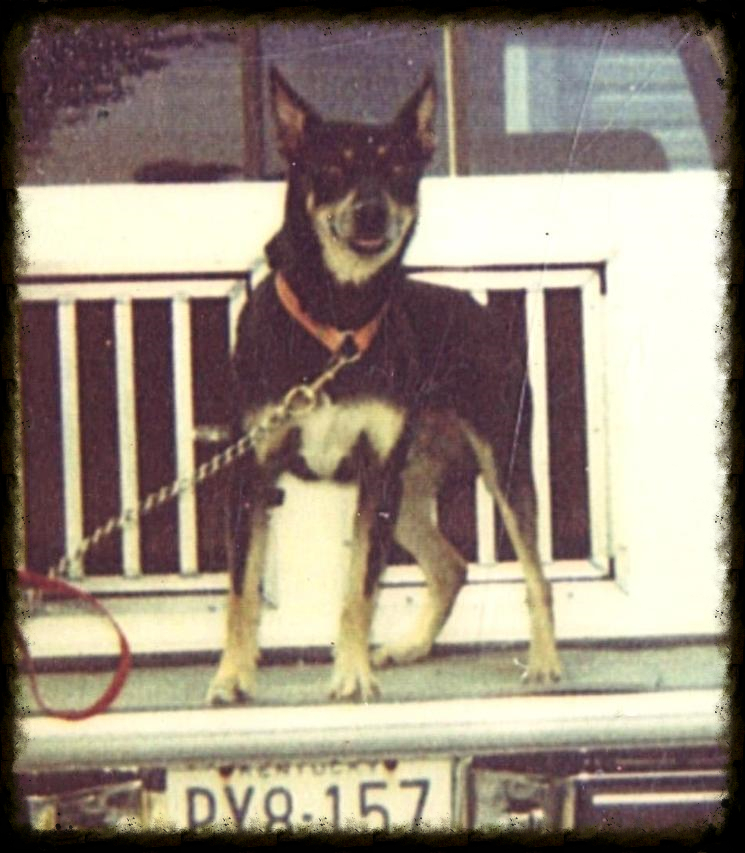
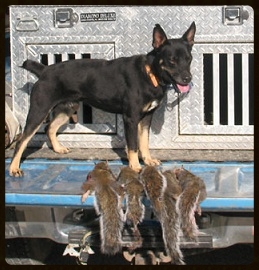
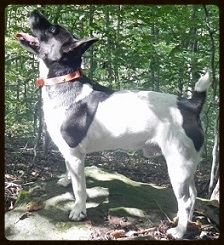
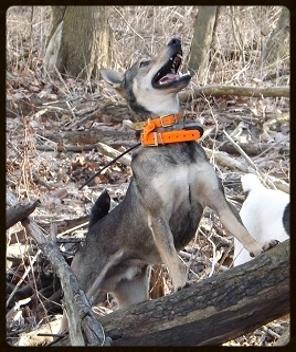
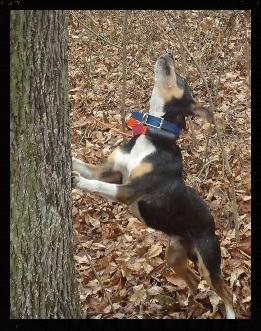
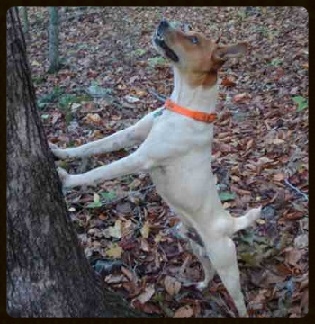

The word "feist" is an ancient one referring to a small, often noisy, dog. Like the Cur breeds, the Feist breeds were developed in the rural South and Appalachian mountains by hunters and farmers who needed low maintenance dogs to hunt small game and to eliminate vermin. Feist were often the result of crosses between hunting hounds and terriers. Today's Mountain Feist is the result of generations of breeding for performance and it is still primarily used to hunt squirrel, although they are also used to hunt raccoon, rabbits and flushing game birds.
The Mountain Feist is an agile, active, small treeing dog. The body is slightly longer than tall. Regardless of the size of the individual dog, the legs must be long enough to allow the dog to move quickly and with agility in rough terrain. The head is blocky, with a broad skull, a moderate stop, and a strong muzzle. The tail is straight, set on as a natural extension of the topline, and may be natural or docked. The coat is short and smooth. The Treeing Feist should be evaluated as a working dog, and exaggerations or faults should be penalized in proportion to how much they interfere with the dog's ability to work. Scars should neither be penalized nor regarded as proof of a dog's working abilities.
Mountain Feist are used most frequently to hunt squirrel, raccoon, and opossum. They hunt using both sight and scent and are extremely alert dogs. On track, they are virtually silent.

These standards were adopted through the majority interest of owners and breeders of the Feist tree dogs. It is hoped that these standards will improve the ability of this old line American hunting dog. These standards are designed to help the buyers, breeders, and show judges to develop a more versatile and pleasurable hunting companion.
A well balanced, shorthaired, sturdy built small dog. This dog should be alert, attentive, and show a genuine hunting spirit, and should be a very loyal companion type dog. It should have a good coat of short hair, (no long or shaggy coat)
(teeth, jaws, muzzle, ears, and eyes)
The head should be well muscled and short. Cocked ears are very desirable, with a long keen muzzle, neck short and strong. Teeth should meet with little or no overbite or under bite. Eyes should be alert and watchful.
(chest, shoulders, front feet and legs)
Good strong legs (bench legs acceptable). Chest and shoulders should be small, strong, and wiry indicating speed and endurance. Chest should be broad and deep with plenty of lung space.
(hips, back, back feet, legs and tail)
Hips and back showing strength and good muscle tone, back slightly arched. Legs need to be straight or benched. Tail either long or stub (however long tail preferred).
The Feist should appear very alert, well muscled, and eager to please the master. Primary colors should be white, tan, red, yellow to lemon, or any variations of these colors. Height standards for males are 10 to 18 inches, and females 10 to 17 inches. Weight limit for male or female dogs are up to 30 lbs. Oversized dogs are considered a fault. Dog should be virtually silent on trail and must tree only squirrel or coons.
The dog should move in a free-swinging gait indicating speed, strength, and endurance. The head and tail should be carried erect. Jerky or awkward movements are a serious fault. When hunting, the dog should be very alert and watchful.
The Feist should appear bold, confident, trusting and loving with its master, neither too shy nor too aggressive, with a strong treeing and hunting instinct. Courageous fighters of that game work with other dogs or work alone.

SGRSQCH GRTRCH SGRBNCH Bates' Hystyle Cadillac Jack

GRSQCH GRTRCH BNCH Combs Pudgie

Jack Buckley's Taz

SGRSQCH Reynolds Rondo

GRSQCH J's Joe Black

Jack Buckley's Bigun